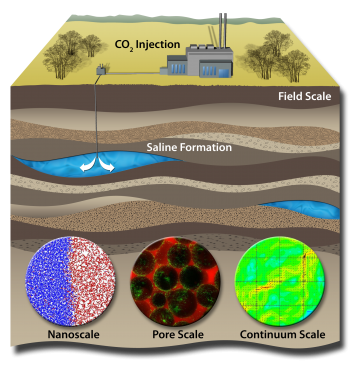The Fate of CO2
October 22, 2015

Climate, Carbon & Geobiology
Reducing carbon dioxide emissions by capturing them and storing them deep underground can decarbonize energy generation from fossil fuels, but there are many unknowns.
Chief among them is what happens to the CO2 over time. A study led by Jackson School of Geosciences researcher Kiran Sathaye that was published Oct. 28, 2014, in the Proceedings of the National Academy of Sciences sheds light on the issue.
The team, which also included the Jackson School’s Marc Hesse and Daniel Stockli, studied the fate of naturally occurring volcanic CO2 in New Mexico’s Bravo Dome. The Bravo Dome has safely stored 1.6 gigatons of CO2 for more than a million years. The team found that 20 percent of the original CO2 has dissolved into the briny water of the Bravo Dome. These results provide important conceptual support for simulation studies used to predict the long-term evolution of geological CO2 storage.
Back to the Newsletter